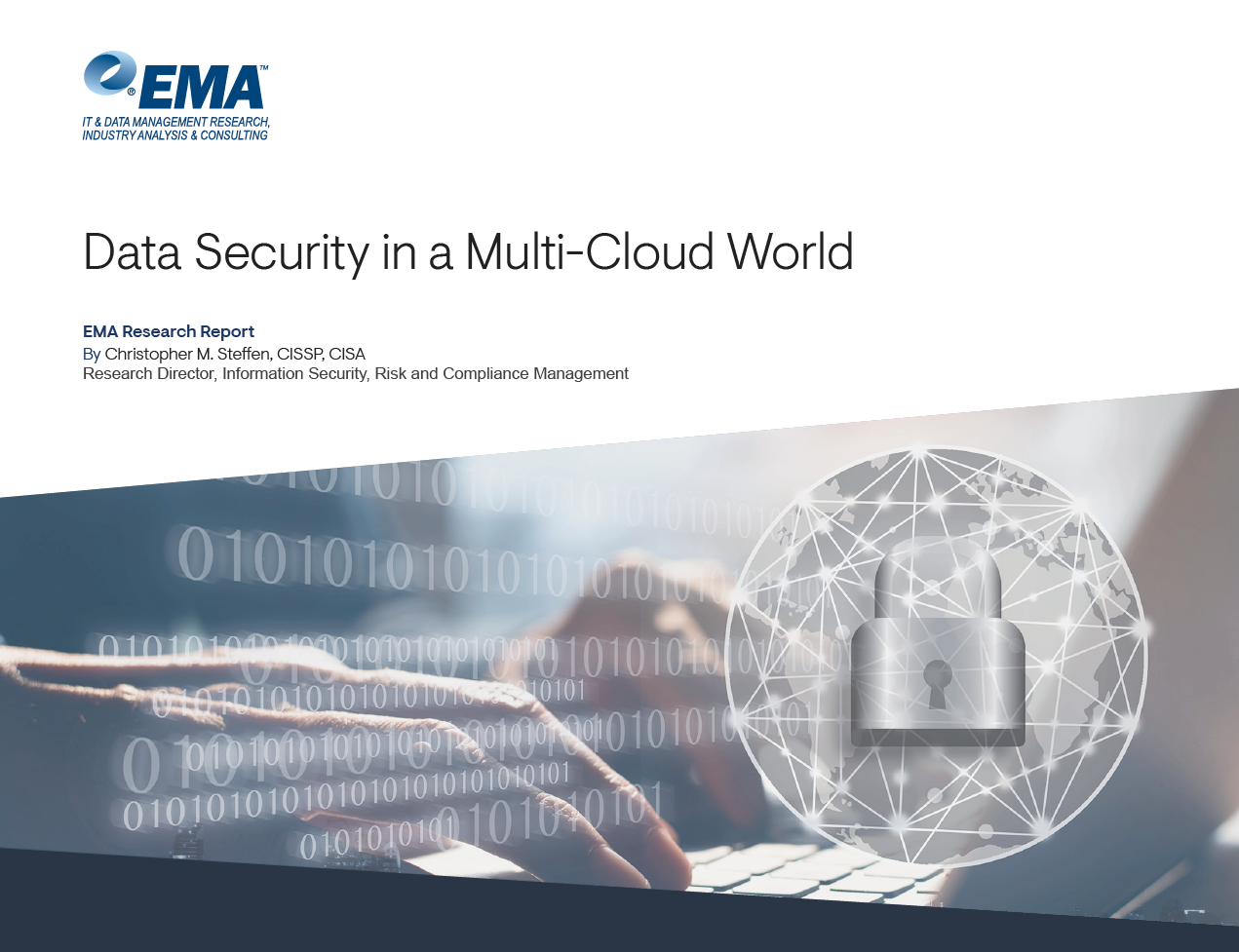Data Security in a Multi-Cloud World...
By Chris Steffen on Jul 22, 2021 8:24:36 AM
Why Consumer IAM is Fundamentally Different From Traditional IAM
By Steve Brasen on Oct 6, 2020 9:34:58 AM
Identity and access management (IAM) has been an integral part of IT since the early days of computing. Foundational to the security of IT resources is the need to identify who may access them, and placing limits on what they can do with them. Since these requirements were principally established to support internal business processes, IAM practices and technologies evolved to specifically support business employees. Following the introduction of the internet, however, new security challenges evolved in support of ecommerce. Rather than having to support a limited number of employees, businesses now must ensure the secure delivery of digital engagements with an expansive range of customers and marketing prospects. These challenges greatly accelerated over the last two decades due to the rise in popularity of consumer-focused cloud services and increasing user mobility.
Three Opportunities to Create Positive Experiences with Consumer IAM
By Steve Brasen on Sep 10, 2020 2:53:42 PM
One-half of one second—that is how brief of a time-span it seemingly can take for a business to lose a customer. Gaining and retaining consumer attention is something of a nuanced art form and science that can be completely undone by an easily misplaced word or a cumbersome process. Businesses frequently lose customers not because they have an inferior product or service but simply because, for some reason, the customers had a brief negative experience. While it is impossible to control what customers are thinking and feeling at any given time, it is clear that many of these negative impressions are self-inflicted by businesses that fail to create welcoming environments. Unfortunately, many organizations find it difficult to adopt CIAM approaches that enable favorable consumer experiences without violating security requirements. After all, the primary purpose of CIAM is to protect a business’s intellectual property, secure private customer information, and prevent account misuse or fraud.
Five Reasons Consumer IAM is Indispensable in the New Normal
By Steve Brasen on Aug 19, 2020 11:33:19 AM
When regional stay-at-home orders in response to the COVID-19 pandemic were first issued in early 2020, the general expectation was that societal changes would only be temporary. As people hunkered down in homes around the world, they expressed a collective confidence that life would eventually (perhaps after only a few weeks) return to normal. Over time, the realization that the pandemic has, in many ways, changed the world forever has slowly been gaining acceptance. Of course, it seems likely that at some point medical science will discover the means to control and perhaps even eradicate the illness, and eventually people will feel free to emerge from their homes. However, many of the fundamental changes to day-to-day activities and lifestyles that have been adopted are likely to persist well into the future.
How to Unleash the Full Value of Hybrid Cloud
By Torsten Volk on Oct 24, 2016 12:26:50 PM
In an ideal world, customers would be able to fully take advantage of the benefits of hybrid cloud by rationally matching infrastructure parameters -cost, performance, reliability, availability, security, regulatory compliance, scalability- with the requirements and dependencies of each application.
Linux on Power—Poised for Greatness
By Steve Brasen on Apr 22, 2016 11:12:45 AM
For two decades, IBM’s Power Systems family of high-performance servers has been considered the premier alternative to x86-based systems. Combining fast processing, high availability, and rapid scalability, Power Systems are optimized to support big data and cloud architectures. Popularly deployed to run IBM’s AIX and IBM i operating systems, the platform has seen stiff competition in recent years from x86-based Linux systems. In 2013, IBM responded to this challenge by investing a billion dollars into the development of enhancements to the Power line that would support Linux operating systems and open source technologies. This bold move was hailed as a strategy that would greatly improve the attractiveness of the platform and drive broader adoption.
Orchestrating a Symphony of Application Automation
By Steve Brasen on Aug 3, 2015 10:42:16 AM
There is a reason orchestras have a single conductor. Can you imagine the cacophony that would result if a horn section performed out of sync with a string section? Or if the percussions played a faster beat then the woodwinds? But in IT management, it’s all too common for organizations to have separate automation platforms conducting individual software elements. In fact, this is often the cause of an increased IT complexity that results in degraded performance and reliability. For instance, SAP’s popular customer relationship management (CRM) software includes a built-in job scheduler – the Computing Center Management System (CCMS) – with some limited capabilities specifically designed to support its unique platform (such as to analyze and distribute client workloads). But this is an independent tool requiring administration and monitoring tasks separate from any other automated solutions. An average IT organization will need to manage dozens of similar management platforms, each with its own unique interface and operating parameters.
Cloud Security Alliance Hack-A-Thon and the Software Defined Perimeter
By David Monahan on Nov 7, 2014 11:00:31 AM
The Cloud Security Alliance (CSA) is a not-for-profit think tank of volunteers that spend their time trying to better the internet. These people are the antithesis of cybercriminals; they spend their energy trying to figure out ways to make our data safer. They create best practices for providing security assurance within cloud computing, or in this case, they determine how a cloud environment can be used to enhance and scale authentication for a service that can be cloud-based or private data center-based.
Software Defined Storage: The Vendor Landscape – Part 2 of 2
By Torsten Volk on Feb 17, 2014 9:42:23 AM
As promised in my previous post on “Software Defined Storage – Why Customers Should Care”, I want to follow-up with a brief overview of the competitive landscape.
Highlights from IBM Analyst Insights 2013
By Torsten Volk on Nov 26, 2013 1:46:30 PM
As every year, IBM invited the analyst community to Stamford, CT, for a deep dialogue on today’s most important topics in enterprise IT. Here is a short overview for everyone interested in IBM’s current world view.









